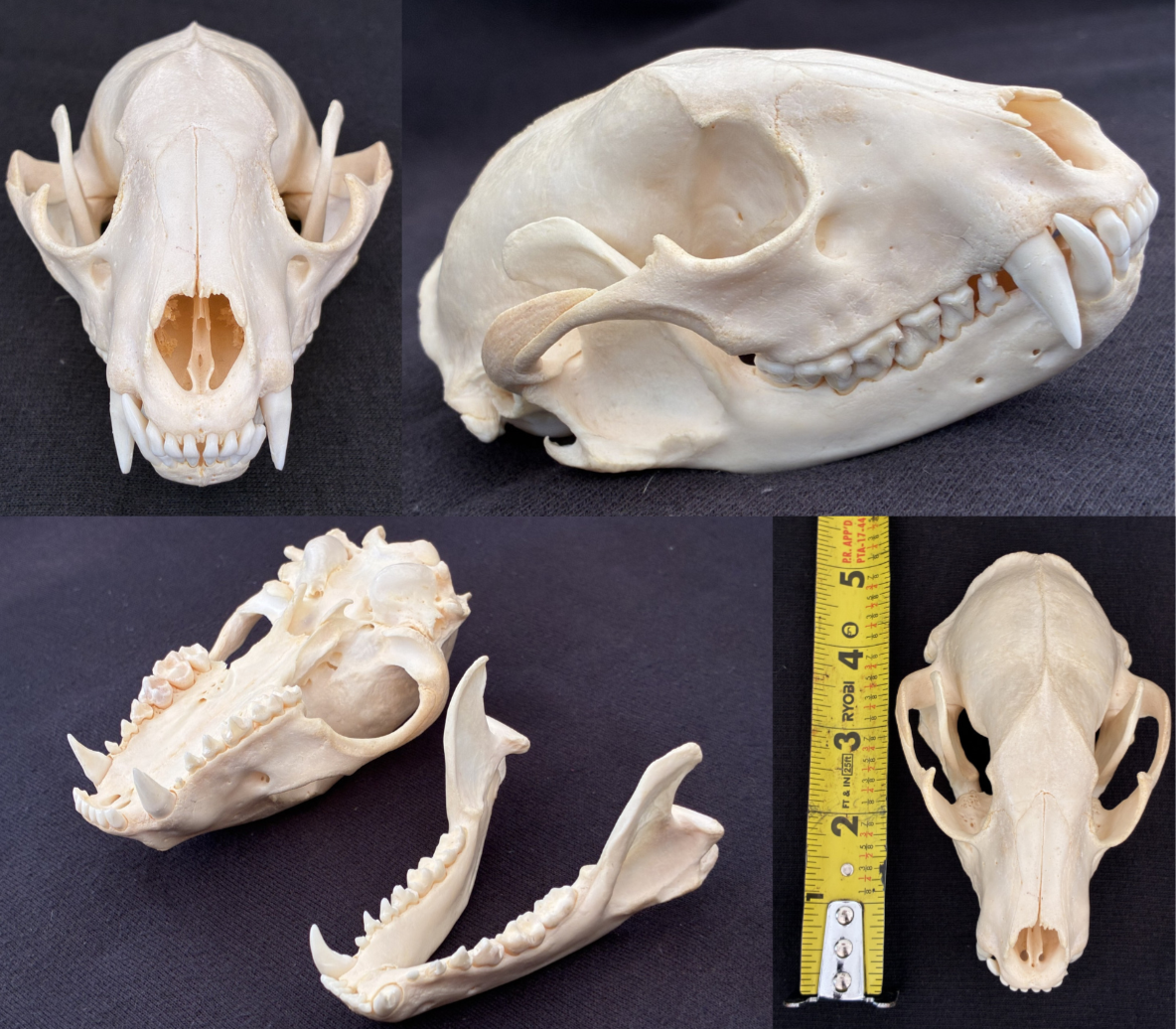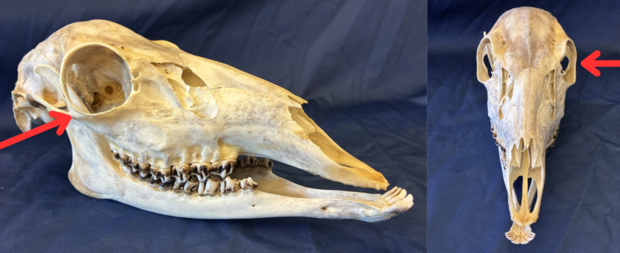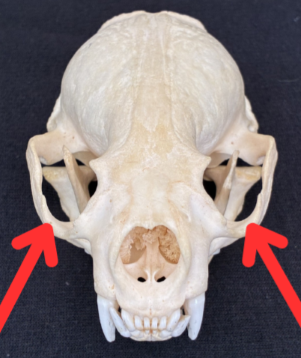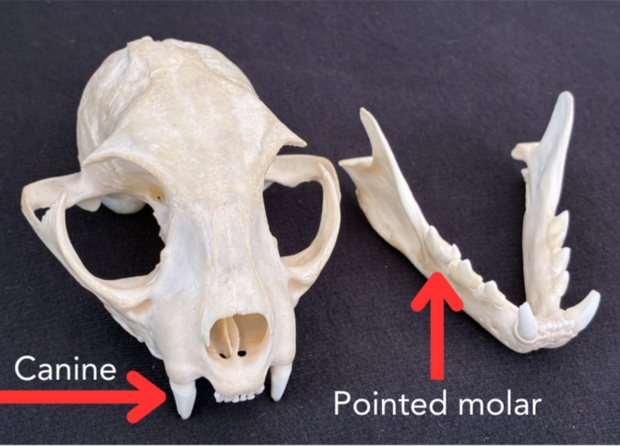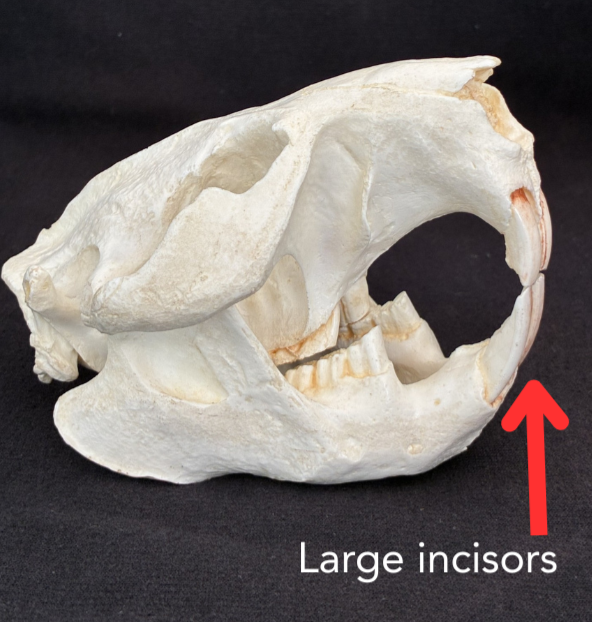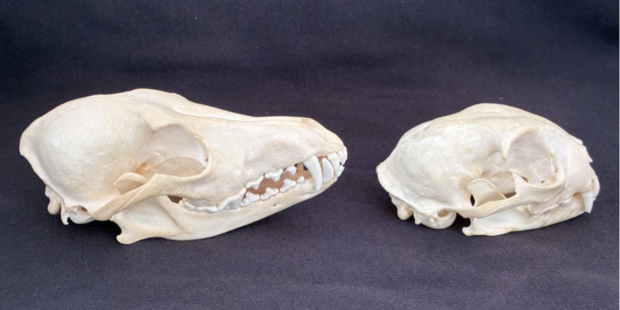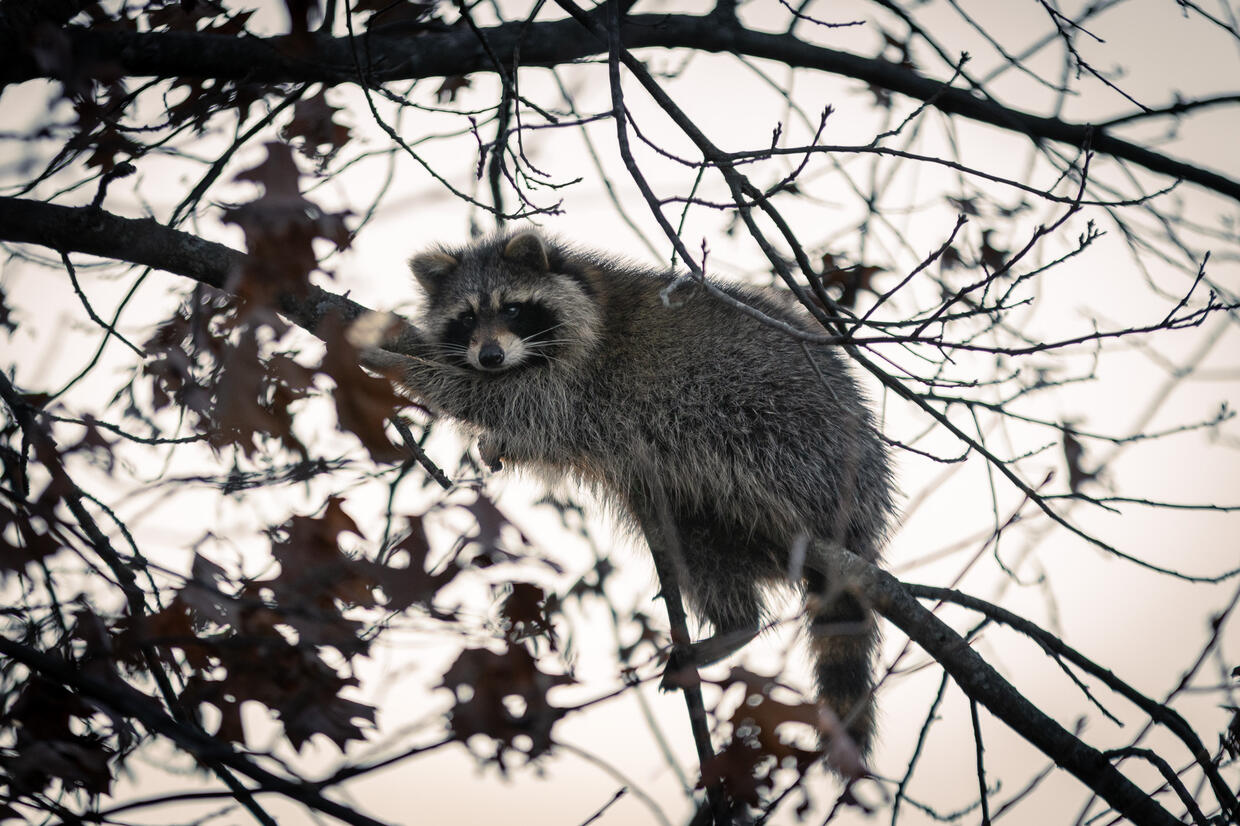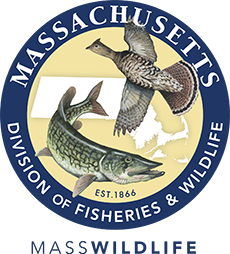- Division of Fisheries and Wildlife
Media Contact
Media Contact, MassWildlife
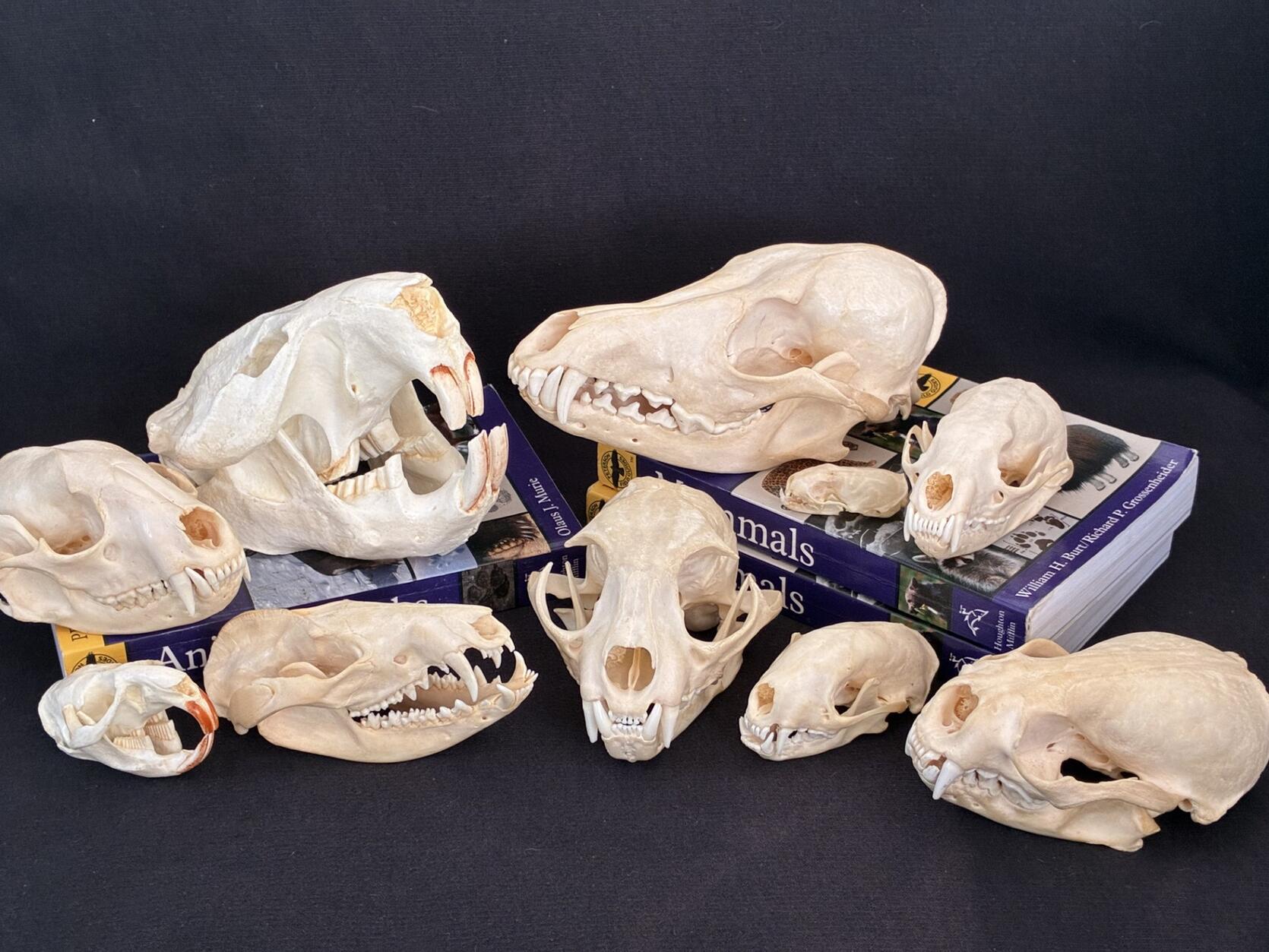
Can you identify the mystery mammal skull? You don’t need a psychedelic van, meddling kids, or a snack-loving great dane to crack this case. All you need to look for are cranial clues.
Before you start, refresh your memory of common mammals in Massachusetts.
Mystery skull
While exploring the three clues below, return back to these skull photos to try identifying the mystery mammal.
Clue #1: Eye socket location
The location of the eye sockets (orbitals) on the skull can give insight into whether the animal is a predator or prey. This can narrow down your guess.
Prey animals, or those that are hunted by other animals, tend to have eyes located toward the sides of their head. This gives them peripheral vision, allowing them to see about 180 degrees around them so they can detect nearby predators.
Predators, those that hunt other animals, often have eyes located toward the front of their skull, like humans. This gives the animal binocular vision, which allows them to have the depth perception needed to successfully find and catch prey.
Look at our mystery skull – Where are the eye sockets located? Do you think this animal is a predator or prey?
Clue #2: Tooth shape
Teeth are tools that animals use to tear apart or grind their food. By looking at the mystery animal’s teeth, you may be able to determine if the animal is a meat eater (carnivore), plant eater (herbivore), or if they eat both plants and meat (omnivore).
Carnivores need teeth designed to catch and tear apart their food. Pointed, triangle-shaped teeth are best for this job. Carnivores tend to have pronounced canines but will often have more pointed premolars and molars too.
Herbivores need teeth that are suited for grinding plant material. Most herbivores do not have canines and rely on their chisel-like incisors to bite off pieces of vegetation and their flat molars with ridges to grind down their food. Deer and moose do not have upper incisors, so they use a combination of their lower incisors and a calloused pad on the roof of their mouth to bite off vegetation. Rodents, like squirrels and beavers, have large front incisors with orange enamel. Though rabbits and hares are lagomorphs and not rodents, they have also large front incisors but do not have orange enamel.
Since omnivores eat both meat and plants, they need a mix of pointed teeth for tearing and flatter teeth with ridges for grinding. Think of your own teeth as an example. We have canines we use to tear into a hamburger, but we then send the food back to our flatter molars to chew.
Look at our mystery skull – What tooth shapes do you see? Do you think this animal is a carnivore, herbivore, or omnivore?
Clue #3: Snout shape and length
The size and shape of an animal’s snout can suggest how much the animal relies on its sense of smell. Bears, coyotes, and foxes are known for their longer noses and keen smelling abilities. Cats, like bobcats, have shorter snouts and tend to use senses other than smell, like vision, to navigate their environment.
Look at our mystery skull – Do you think the mystery animal has a long, medium, or short snout? Do you think smelling is their primary sense?
Ready to solve the mystery?
Clue #1: The skull has eyes toward the front of their head. The animal is a predator, hunting for some or all its food.
Clue #2: There are pointed canines and premolars but it also has flatter molars with ridges. This means the animal is likely an omnivore, eating meat and plants.
Clue #3: The skull has a medium-length snout. This suggests the animal may use their sense of smell often, but other senses may be equally important.
Want another hint?
This medium-sized mammal has excellent dexterity and can turn doorknobs and open containers.
The answer is...
Raccoon! Raccoons are highly adaptable and occupy a variety of habitats, including agricultural land, forests, wetlands, and neighborhoods. As opportunistic omnivores, raccoons eat whatever is easiest to find and readily available, including insects, crayfish, crabs, mussels, turtles and their eggs, injured waterfowl, and muskrat kits. Raccoons raid bird nests consuming eggs and nestlings, and feed on plant material such as berries, nuts, and seeds. Additionally, raccoons are well known for raiding garbage cans, agricultural crops, chicken coops, and pet food left outdoors. Raccoons are active year-round and do not hibernate, although during very cold weather, they may sleep in a den for several days at a time.
